Basso Continuo on the Harp for “Sola fra’ suoi più cari” (Orazio Michi)
Published: 05.05.2021 Author:
Abstract
Video recording and related materials to “Sola fra’ suoi più cari”, lamento for voice and basso continuo by Orazio Michi.
Keywords
basso continuo; arpa doppia; arpa a tre ordini; Orazio Michi; 1600; music in Rome
Research project
Realising the basso continuo on the Italian “arpa a tre ordini”
How to cite
"Basso Continuo on the Harp for “Sola fra’ suoi più cari” (Orazio Michi)".
Forschungsportal Schola Cantorum Basiliensis, 2021.
https://forschung.schola-cantorum-basiliensis.ch/en/forschung/basso-continuo-on-harp/sola-fra-suoi-piu-cari.html
(Abgerufen am TT MM JJJJ)
Licence
The text of this article is provided under the terms of the Creative Commons License CC-BY-NC-ND 4.0
Credits
Orazio Michi (c. 1595–1641): “Sola fra’ suoi più cari”
Mara Galassi, arpa a tre ordini & realisation of the basso continuo
María Cristina Kiehr, soprano
Arpa a tre ordini, copy of the Arpa Barberini, Girolamo Acciari, Rome 1632 by Dario Pontiggia, 2009, Milano (Italy)
Recorded on 4 February 2018
at the Schola Cantorum Basiliensis, Basel (Switzerland), Kleiner Saal
Sound engineer: Oren Kirschenbaum
Video production & editing: Elam Rotem
Project manager & concept: Martina Papiro
Special thanks to: Masako Art, Thomas Drescher, Martin Kirnbauer, Birgit Knab, Isabell Seider
© Schola Cantorum Basiliensis
Sources for “Sola fra’ suoi più cari”
For a complete list of sources see Ziane 2020b, 278–279.
The proposed realisation of the basso continuo is based on two sources, both preserved in Roman libraries: I-Rc, 2490 and I-Rn, mss. mus. 56. These sources differ in many details, e.g. in ornaments of the solo voice or for the rhythm and notation of the last bars.
Roma, Biblioteca Casanatense, Ms. 2490 , 60v–63r (olim 124–129)
Please see the PDF version to see the reproduction of the manuscript pages.
Roma, Biblioteca Nazionale, Mss. musicali 56, cc. 37v–42r
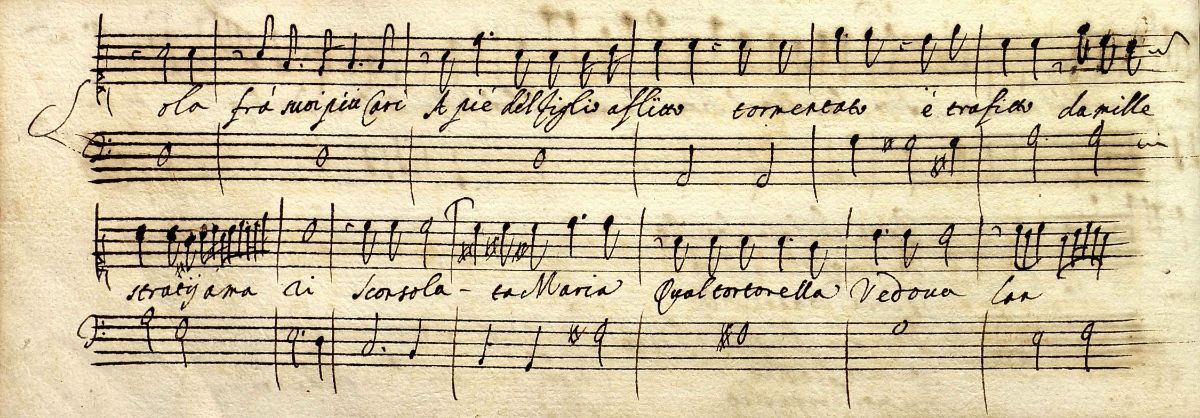
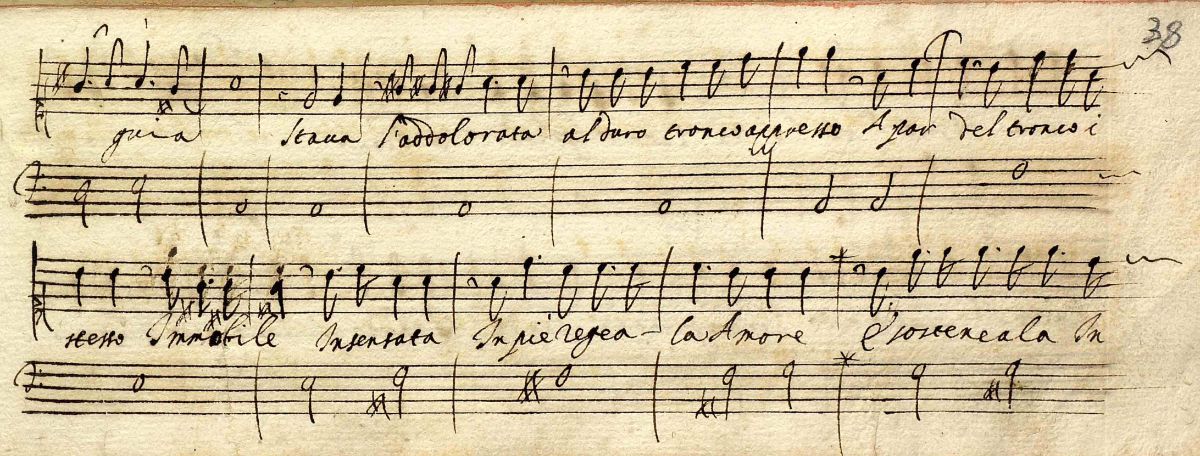
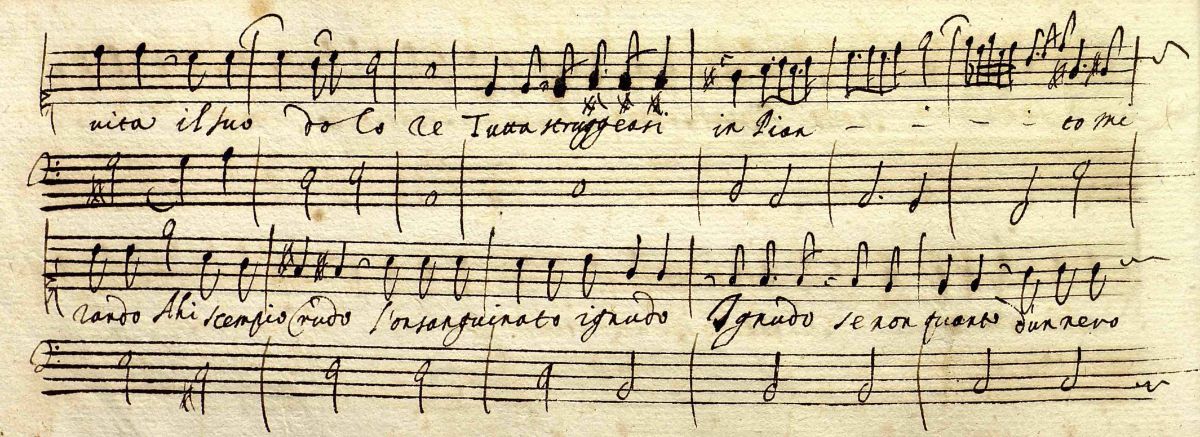
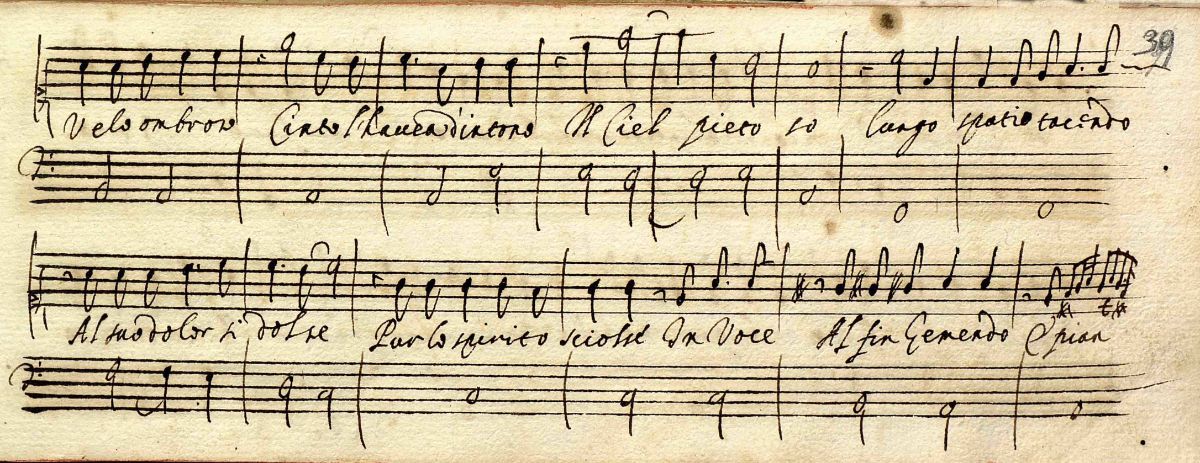
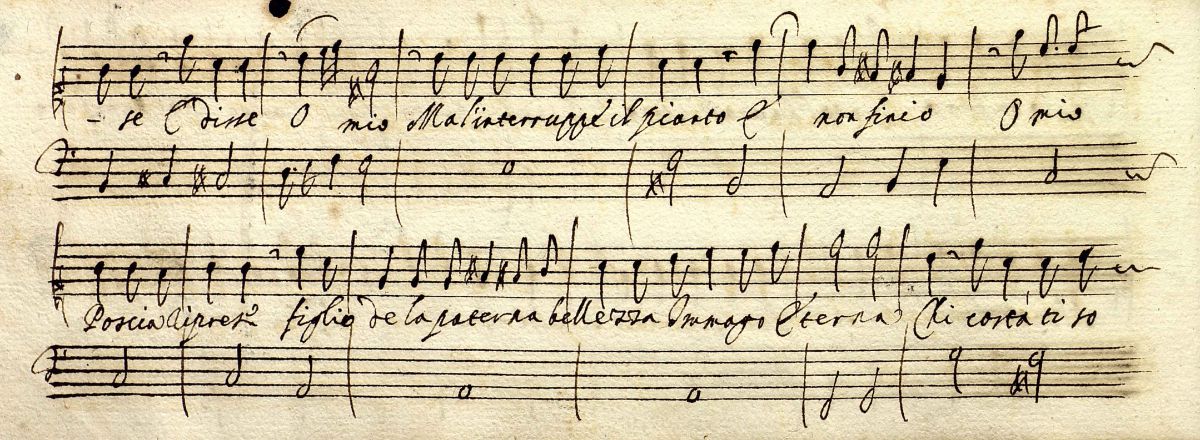
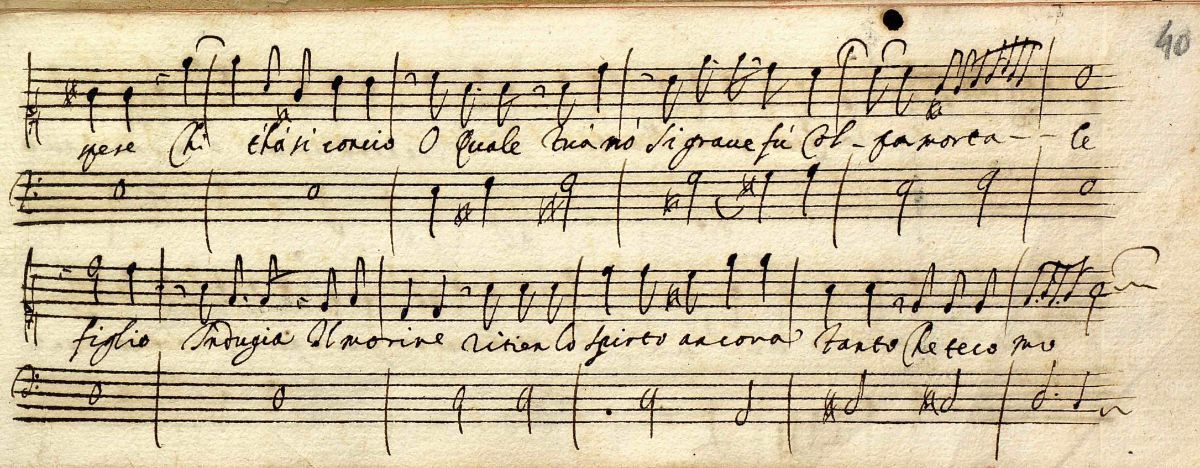
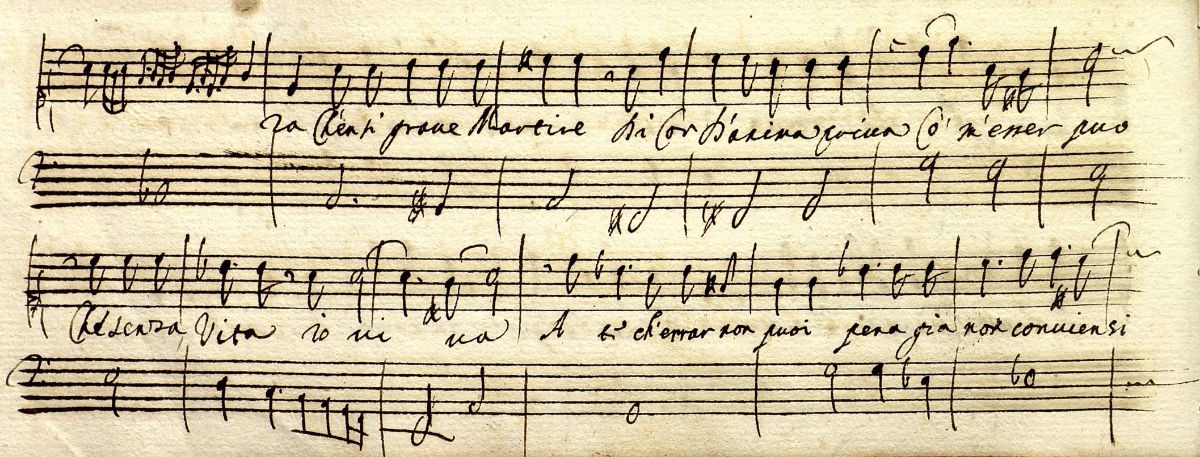
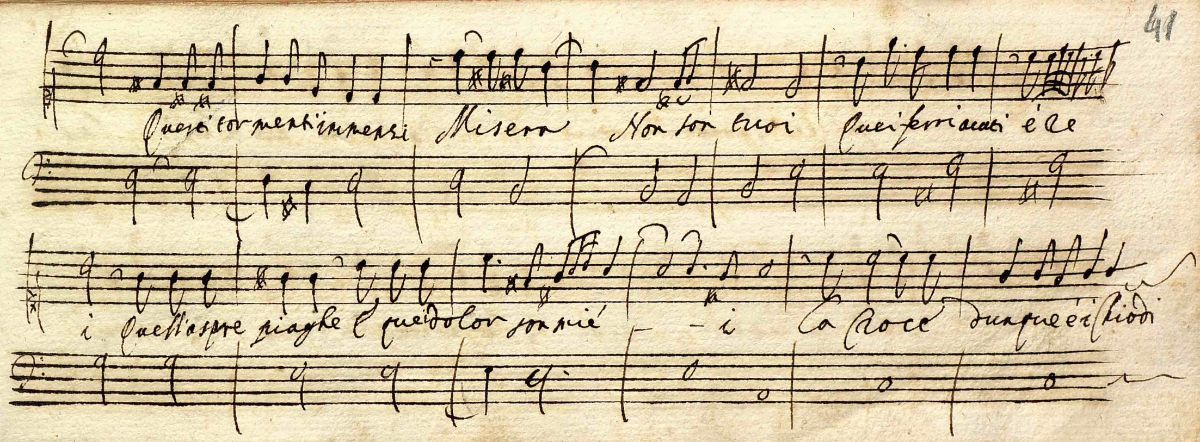
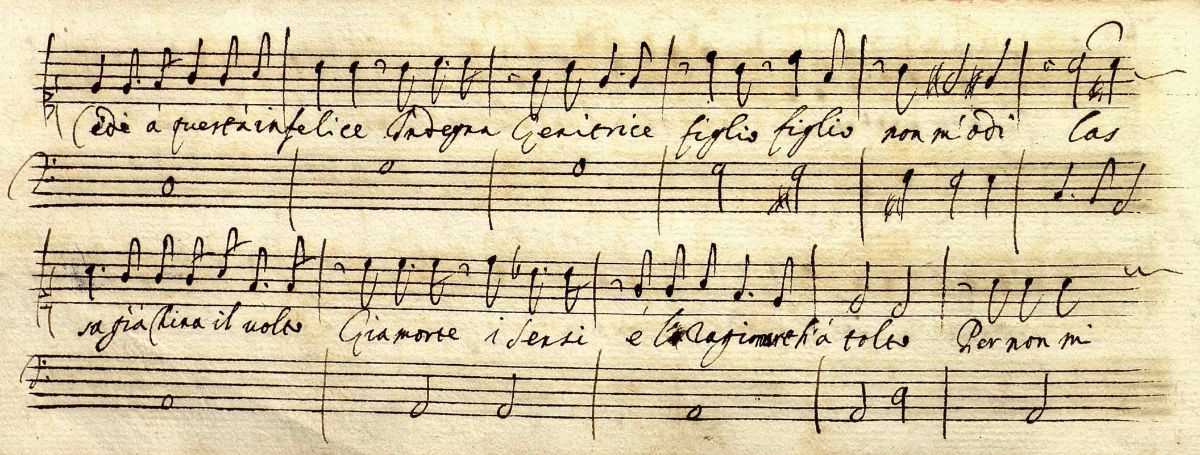
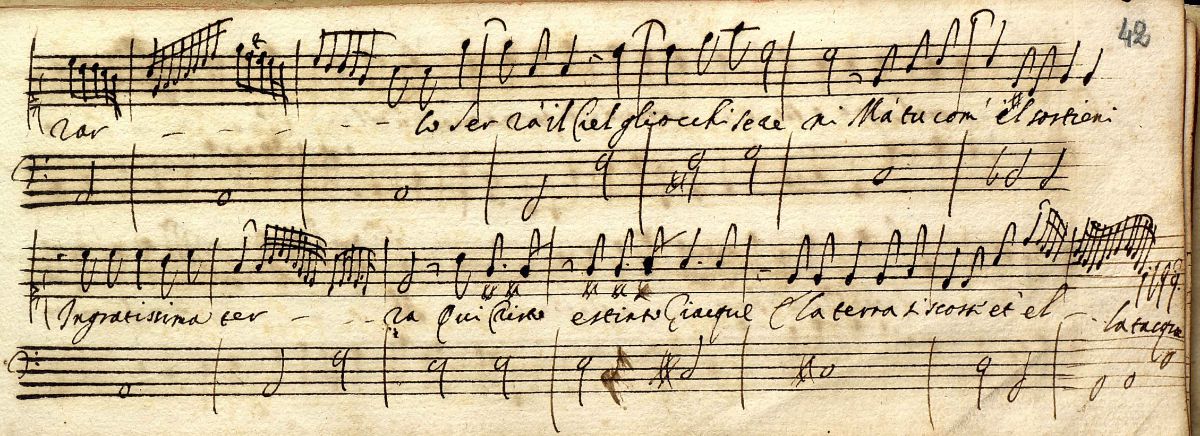
View the entire MSS mus. 56: http://www.internetculturale.it/it/16/search/detail?instance=magindice&id=IT%5CICCU%5CMSM%5C0014249
Text of “Sola fra suoi più cari” by Giovanni Battista Marino
The edition of the text is taken from Ziane 2020a, the English Translation from Murata 2013. To distinguish direct from indirect speech, the direct speech is put in italics.
|
Sola fra suoi più cari |
Alone among her dearest ones, |
|
|
|
|
|
|
|
|
|
|
|
|
|
|
|
|
|
|
|
|
|
|
|
|
|
|
|
|
|
|
|
|
Selected Bibliography
Galassi & Granata 2020. Mara Galassi & Chiara Granata, “ ‘Tanto che non si potrebbe sentir cosa più bella’. The Harp as Basso Continuo Instrument in Rome at the Time of Orazio Michi”, in: Martina Papiro (ed.): Groß Geigen um 1500 • Orazio Michi und die Harfe um 1600, Basel: Schwabe Verlag 2020 (Basler Beiträge zur Historischen Musikpraxis 39), 313–344.
Murata 2013. Margaret Murata, “Cantar ottave, cantar storie”, in: Word, Image and Song, vol. 1: Essays on Early Modern Italy, ed. Rebecca Cypess, Beth L. Glixon and Nathan Link, New York: University of Rochester Press 2013, 287–317: 311–313.
Papiro 2020. Martina Papiro (ed.): Groß Geigen um 1500 • Orazio Michi und die Harfe um 1600, Basel: Schwabe Verlag 2020 (Basler Beiträge zur Historischen Musikpraxis 39).
Ziane 2020a. Alexandra Ziane, “Orazio Michi: Contemporary Testimonials, Documents, and Work”, in: Martina Papiro (ed.): Groß Geigen um 1500 • Orazio Michi und die Harfe um 1600, Basel: Schwabe Verlag 2020 (Basler Beiträge zur Historischen Musikpraxis 39), 243–272.
Ziane 2020b. Alexandra Ziane, “List of Works by Orazio Michi (c. 1595–1641)”, in: Martina Papiro (ed.): Groß Geigen um 1500 • Orazio Michi und die Harfe um 1600, Basel: Schwabe Verlag 2020 (Basler Beiträge zur Historischen Musikpraxis 39), 273–279.
